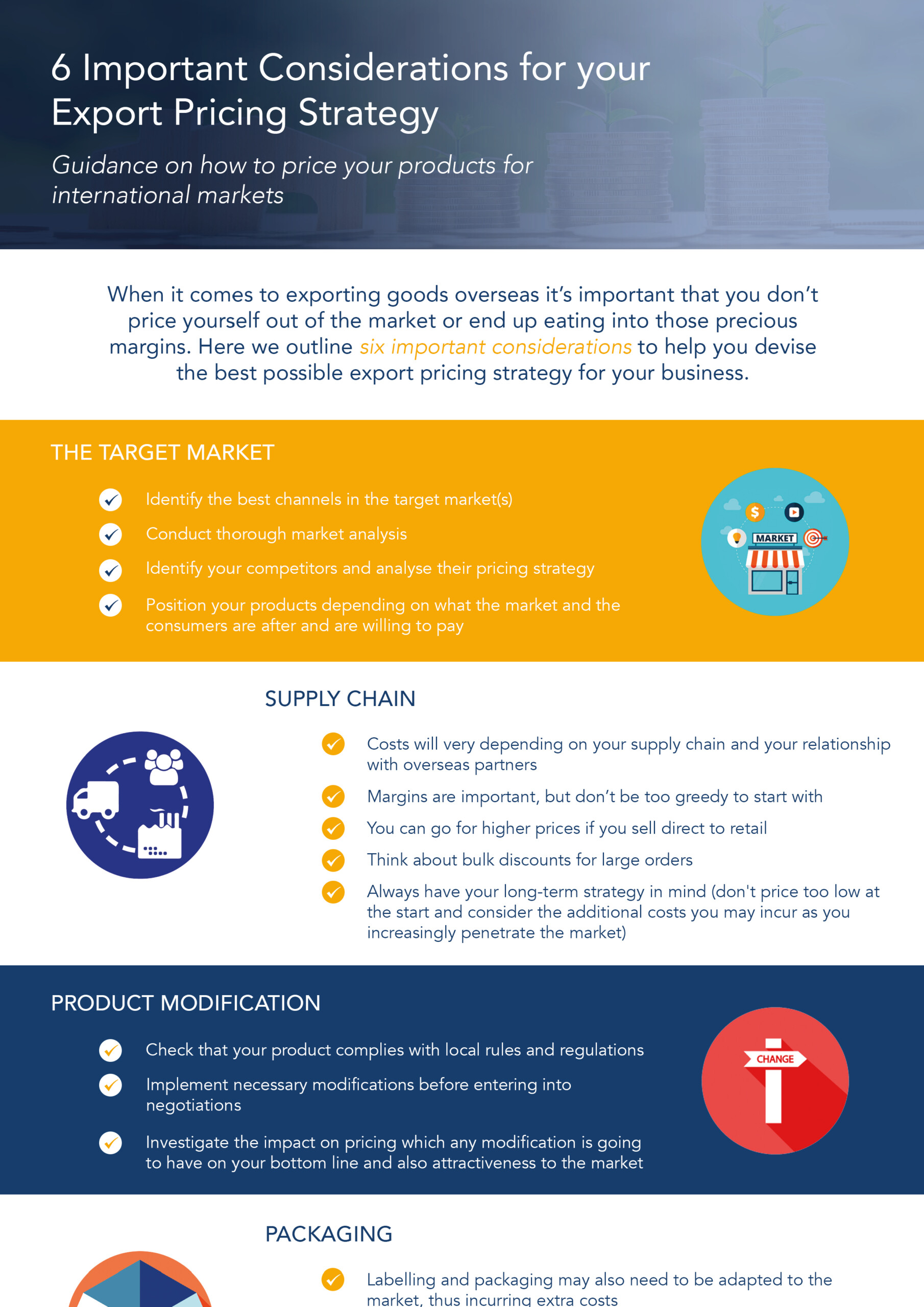Export Pricing Strategy: 6 Important Considerations

When it comes to exporting goods overseas it’s important that you don’t price yourself out of the market or end up eating into those precious margins. Here we outline six important considerations to help you devise the best possible export pricing strategy for your business.
1/ The Target Market
2/ Supply Chain
3/ Product Modification
4/ Packaging
5/ Logistics
6/ Documentation
Other Factors to Consider
How much does it cost to export food and drink products overseas?
For other FAQ videos, visit our FAQ page here.

